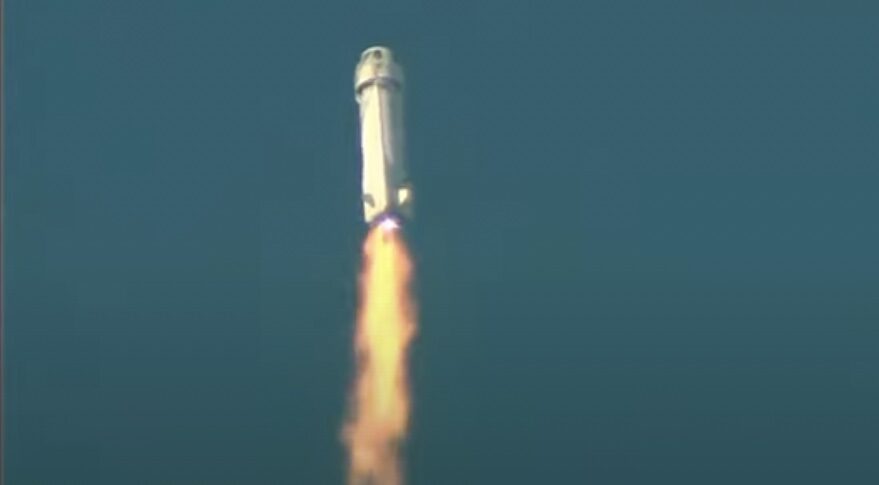
Blue Origin says still “super early” into New Shepard launch failure investigation (Image Credit: Space News)
PARIS — A Blue Origin executive said it’s too soon to conclude what caused the failure of a New Shepard suborbital vehicle on a Sept. 12 flight, playing down any implications for the company’s New Glenn orbital rocket.
Speaking on a panel at World Satellite Business Week here Sept. 13, Jarrett Jones, senior vice president for New Glenn at Blue Origin, offered few new details about the failure a little more than 24 hours earlier of the company’s New Shepard vehicle on a payload-only flight.
On that flight, the vehicle’s capsule fired its launch abort motor at about T+65 seconds, sending the capsule clear of its booster. The capsule landed safely, and Blue Origin later confirmed the booster was destroyed.
Speculation has focused on a potential problem with the vehicle’s BE-3 engine. The plume from that engine changed appearance at about T+60 seconds, and frame-by-frame analysis showed what appeared to be debris falling off the booster just before the capsule fired its escape motor.
“We are not prepared to talk about what actually happened,” Jones said when asked about the accident during the panel. “It’s a little premature to assume that it was something related to the engine.”
Blue Origin plans to use a version of the BE-3, called the BE-3U, on the upper stage of the New Glenn orbital rocket. Jones noted there was “technology transfer” from the engine used on New Shepard, called the BE-3PM, to the BE-3U on New Glenn, but added the BE-3U is “an upgraded version” of the engine.
Jones, who is not involved with the New Shepard program, said he knew little more than what the company had publicly disclosed about the accident. “We still have some work to do. It’s super early,” he said.
He did emphasize, like the company, the success of the launch escape system, which allowed the capsule, carrying three dozen research and other payloads, to land safely. “All the systems functioned the way we planned them,” he said of the escape system. “There was no damage that we could see from a payload perspective.”
The Federal Aviation Administration said Sept. 12 that it will lead the investigation of the accident, and would not allow New Shepard to fly again until that investigation was completed. Both are standard measures for any commercial launch accident. The FAA and National Transportation Safety Board signed a memorandum of agreement Sept. 9 where the FAA would lead all such investigations except in cases where people were killed or seriously injured, or if there was debris that fell outside the launch site that could “reasonably” be expected to lead to deaths or serious injuries.
During the panel, Jones said Blue Origin was making good progress on the long-delayed New Glenn. “The last 12 months have been absolutely critical for us,” he said, citing progress on both qualifying components of the vehicle and producing flight hardware. “We’re over the hump.”
He declined, though, to give a target launch date for the first New Glenn launch, now expected some time in 2023. “We’re going to launch when we align with the customer that we’re looking at and working with,” he said. “We’re going to launch when we’re ready.”








